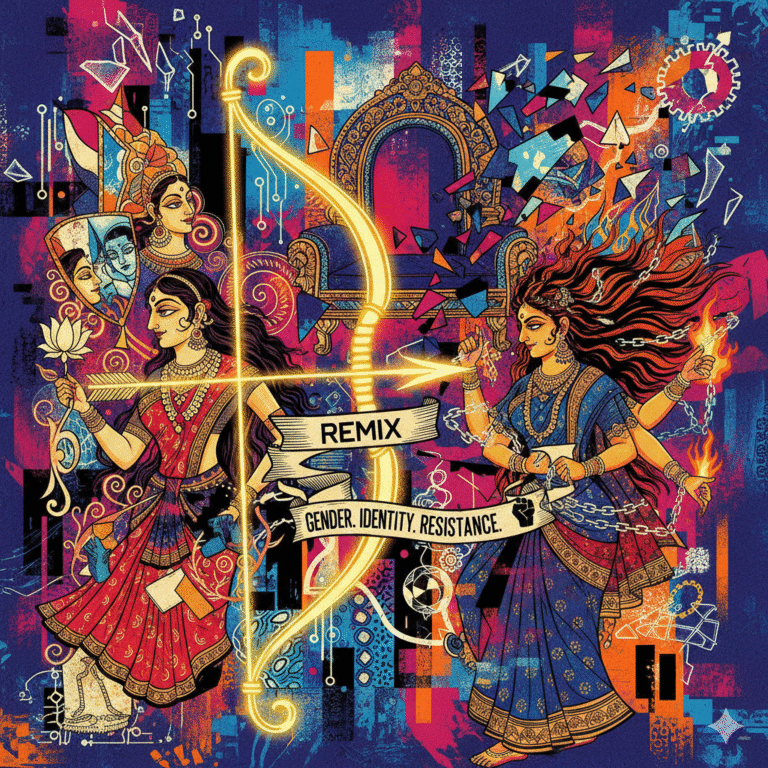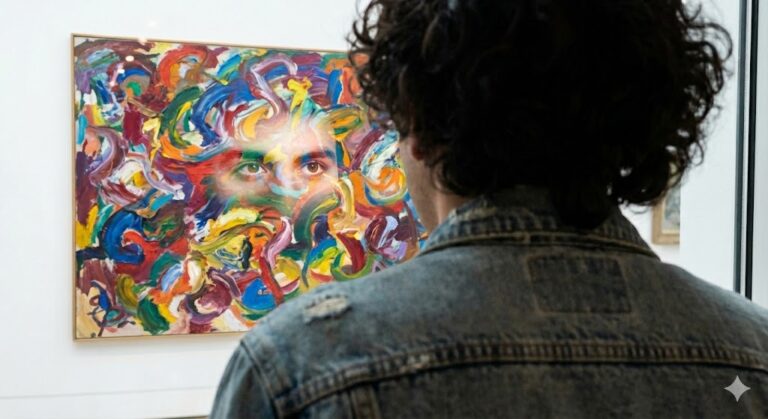by Anushree Ghosh
As some stray sounds become part of our daily routine, we become immune to their presence, only to realise later in their absence that they have become an intricate part of our lives. Throughout the history of cinema, digenic sounds have played a significant role in the sonic narration that originates from the perspective of the characters on screen. These are sounds that can be heard by characters in a film or TV show and are not exclusive to the audience. This term could refer to an exaggerated situation of a storm or a war, where the rumbling and clashing sounds are majorly heard in the sound design; however, we are going to talk about the daily sounds: newspaper landing on the veranda, bathing under the shower, preparing tea in the morning, jingling keys and the clicks on your laptop. These sounds are oblivious to our conscious state but are deeply ingrained in the base of our subconscious.
Though the diegetic world of Indian cinema has come far – from the use of sweet musicals to realise the potential and effect of sonic realism. In one of the earlier essays, filmmaker Satyajit Ray stated :
“For a popular medium, the best kind of inspiration should derive from life and have its roots in it. No amount of technical polish can make up for artificiality of theme and dishonesty of treatment. The Indian filmmaker must turn to life, to reality.”
The sounds of that era have changed forms, the chaotic sound of the increasing population has increased multiple times and so is technology; regarding nature, we don’t know if the leaves are making a different sound by clashing with the pollutants in the wind or the rain are hitting more cars parked on street. But filmmakers are trying more and more to involve sounds of different forms in the world of their characters.
Here are a few observations from the 2022 releases:

Monica O My Darling: Adapted from Keigo Higashino’s novel “Burutasu No Shinzou” this mayhem of mixing sound with life has truly leveled up the Indian expectation when it comes to sound design in Indian films. The film adds a dash of humour and eccentricity to all the murder scenes with a concoction of retro and pop beats. The film has made a bold move by transitioning the background music from post-edit to shooting mode.
Are we aware of our theme music? if we are just acting in our respective lives, how would we react if we get a chance to sit face-to-face with the lyrics and music of our own life? It is a fascinating concept for filmmakers and they have used it in myriad ways, one of them is the use of music as an element of interaction for the characters. Way back in 1983, in the movie Octopussy, James Bond visits India following a lead to solve the murder of agent 009. He is greeted by the Bond’s theme music played by an Indian serpent.
The recently released film ‘Monica O My Darling’ executes the same idea and places the theme music amidst the anarchy that settles in the whole plot. This is the scene where Rajkumar Rao (Johnny) is following the instructions to murder the common blackmailer, Huma Qureshi (Monica Machado). He boards a train, as discussed with his co-plotters, to aid in the dispersal of the corpse. In this relay race while we are constantly listening to the notes of “Monica O My Darling” in high and low pitches, Rao encounters a broken car on his way to the destination, and to add to the glory of the murderer/plotter, the woman inside the car was also listening to the same song, “Monica O My Darling”. The music that began as an ode to old Hindi cinema was being played conspicuously; and in this particular scene, the background music makes an organic shift becoming a part of the characters on screen. Just like how we listen to music via the radio or the internet, but we never know the song that plays itself with the unexpected rhythms of our lives – that too, just organically!

Gangubai : This film teleports us to the quondam era with every frame, scene, and sound. The vintage sounds of cars, cameras, anklets, and bangles are pertinent to the story. However, there is this one scene where the background music is mixed with some natural sounds to enhance the series of vibrations hitting our eardrums. When Gangubai, played by Alia Bhat discusses the fitting of her clothes with the tailor while taking a bath in the open set-up, we listen to the soothing romantic tune. Now, along with a flirtatious-sultry portrayal of the female protagonist, the sound of water holds the scene with a seductive, yet calming effect. The glances that are exchanged are accompanied by the sound of water hitting the body and the ground; just as the constant flow of life and water is accentuated in our kitchen, washrooms, and through a parched throat.

Laal Singh Chaddha: Adapted on the tracks of the cult hit ‘Forrest Gump’, Laal Singh Chaddha borrows sounds from different decades – all synced on the rumbling sound that a moving train makes. Most of the narration of the past events takes place while moments pass with curiosity for every character inside the train coach. And the dialogue ‘pet bhale hi bhar jaawe, man nahi bharta’ (you might not feel hungry anymore, but your heart always desires for more’) is spoken for an Indian snack, golgappa, but conveys a far greater universal message – humans are never satisfied with what they have and always crave for more, and the vicious circle goes on. The statement ends with the train honk – almost like giving a big round of applause to the eternal truth.
These films have presented a potpourri of sounds that often go unnoticed when we are busy creating sounds of anger, fun, sorrow, and happiness; they hide in plain sight. They leave clues for us, only if we learn to decipher them, we’ll be able to win this evergoing hide-and-seek of sounds, only if we learn to listen – if the characters on screen can hear, we can hear them too.








+ There are no comments
Add yours